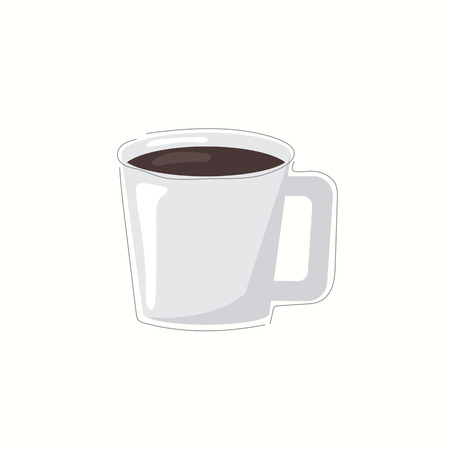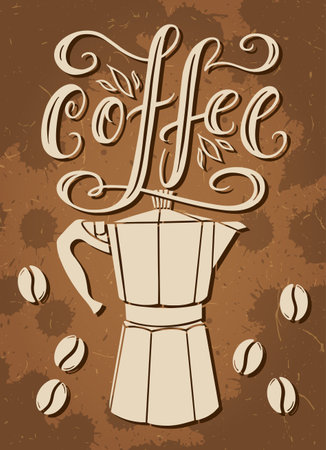1. What Is Cold Brew Coffee?
Cold brew coffee is a smooth, refreshing way to enjoy your daily dose of caffeine—especially during warm weather. Unlike traditional iced coffee, which is brewed hot and then chilled, cold brew is made by steeping coarsely ground coffee beans in cold water for an extended period of time, usually 12 to 24 hours. The result is a coffee concentrate that’s lower in acidity and bitterness, making it easier on the stomach and naturally sweeter in taste.
Cold Brew vs. Iced Coffee
People often confuse cold brew with iced coffee, but they’re actually quite different in how they’re made and how they taste. Heres a quick comparison:
| Feature | Cold Brew | Iced Coffee |
|---|---|---|
| Brewing Method | Steeped in cold water for 12-24 hours | Brewed hot, then cooled over ice |
| Flavor Profile | Smooth, mellow, low acidity | Bolder, more acidic |
| Caffeine Content | Typically higher (when undiluted) | Varies depending on brew method |
| Storage Life | Lasts up to 2 weeks when refrigerated | Best enjoyed immediately after brewing |
Why Cold Brew Is So Popular in the U.S.
The popularity of cold brew has skyrocketed across the United States in recent years—and for good reason. Americans love convenience, and cold brew fits right into that lifestyle. You can make a big batch ahead of time and store it in the fridge for quick grab-and-go mornings. Plus, its smooth flavor makes it easy to customize with milk, sweeteners, or even flavored syrups without overpowering your taste buds.
Coffee shops from coast to coast now offer cold brew on tap or bottled versions for customers who want that chill caffeine fix anytime. Whether you’re commuting to work or relaxing at home on a summer afternoon, cold brew is a go-to choice for many coffee lovers looking for something cool, tasty, and energizing.
2. How to Make Cold Brew at Home
Making cold brew coffee at home is easier than you might think, and it doesn’t require any fancy equipment. All you need are some basic ingredients, a little patience, and you’ll have a smooth, refreshing concentrate ready to enjoy in no time.
Step-by-Step Instructions
What You’ll Need:
- Coarsely ground coffee (freshly ground for best flavor)
- Filtered water
- A large jar or pitcher with a lid
- A fine mesh strainer or cheesecloth
Recommended Coffee-to-Water Ratio:
| Coffee (Coarse Grind) | Water (Filtered) | Strength |
|---|---|---|
| 1 cup | 4 cups | Standard concentrate |
| 1 cup | 5-6 cups | Milder concentrate |
Brewing Steps:
- Add the coffee grounds: Place the coarsely ground coffee into your jar or pitcher.
- Add water: Pour filtered water over the grounds, making sure all the coffee is fully saturated.
- Stir gently: Use a spoon to stir the mixture, ensuring even extraction.
- Cover and steep: Seal the container and place it in the refrigerator or on your countertop. Let it steep for 12 to 24 hours. The longer it steeps, the stronger the flavor.
- Strain the concentrate: After steeping, strain the mixture using a fine mesh strainer, cheesecloth, or a coffee filter into a clean container.
TIPS:
- If you prefer a smoother taste, double strain your cold brew using both a mesh strainer and a paper filter.
- You can adjust strength by diluting the concentrate with water, milk, or a milk alternative when serving.
Once you’ve made your cold brew concentrate, you’re ready to move on to storing it properly so it stays fresh and delicious for days.

3. Best Beans and Grind for Cold Brew
When it comes to making the perfect cold brew, the type of coffee beans you use and how you grind them can make a big difference in flavor. Unlike hot coffee, cold brew is all about smoothness, low acidity, and subtle sweetness—so choosing the right beans and grind size is key.
Choosing the Right Coffee Beans
Cold brew tends to highlight different notes than hot coffee. Since there’s no heat involved in the brewing process, some of the sharper flavors are muted, allowing deeper chocolatey, nutty, or fruity tones to shine through. Here are a few tips to help you pick the best beans:
| Bean Type | Flavor Profile | Why It Works for Cold Brew |
|---|---|---|
| Medium Roast | Smooth, balanced, slightly sweet | Brings out mellow chocolate or caramel notes without being too bitter |
| Dark Roast | Bold, rich, chocolaty | Gives your cold brew a deep, robust body with low acidity |
| Single-Origin (e.g., Ethiopian) | Fruity, floral, complex | Adds unique flavors; great if you like experimenting with taste profiles |
The Ideal Grind Size for Cold Brew
The grind size plays a huge role in how your cold brew turns out. For cold brew, always go with a coarse grind. Think breadcrumb-sized particles. If it’s too fine—like espresso grind—you’ll end up with over-extracted coffee that tastes bitter and muddy.
Grind Size Comparison:
| Grind Size | Looks Like | Good for Cold Brew? |
|---|---|---|
| Extra Coarse | Sea salt crystals | Yes – ideal for immersion methods like mason jars or French press |
| Coarse | Bread crumbs or kosher salt | Yes – balances extraction time and clarity of flavor |
| Medium-Coarse to Medium-Fine | Sugar or sand-like texture | No – can lead to cloudy or overly strong brews |
| Fine to Extra Fine (Espresso/Turkish) | Flour-like powder | No – over-extracts easily and creates sludge at the bottom of your jar |
Pro Tip:
If youre buying whole beans and grinding at home, use a burr grinder instead of a blade grinder. Burr grinders give you more consistent results, which means better tasting cold brew every time.
The right combination of bean type and grind size is where the magic happens. Once you’ve found your favorite roast level and nailed down that coarse grind, you’re well on your way to crafting deliciously smooth cold brew that hits all the right notes.
4. How to Store Cold Brew Properly
Once youve brewed a smooth, flavorful batch of cold brew coffee, its important to store it the right way to keep it tasting fresh. Unlike hot coffee, which is best enjoyed right after brewing, cold brew can last for days—if stored properly.
Why Proper Storage Matters
Cold brew is less acidic than traditional coffee, but its still vulnerable to oxidation and bacteria if left out too long or stored incorrectly. Keeping it cold and sealed helps maintain its flavor, aroma, and safety.
Best Practices for Storing Cold Brew
- Use an airtight container: Glass jars with tight-fitting lids or specially designed cold brew pitchers work best. Avoid storing in open containers or plastic that may absorb odors.
- Refrigerate immediately: As soon as your cold brew is done steeping and has been filtered, transfer it to the fridge. Leaving it out at room temperature can lead to spoilage.
- Label your brew date: It’s easy to forget when you made it! A simple label helps track freshness.
How Long Does Cold Brew Last?
The shelf life of cold brew depends on whether its concentrated or diluted. Heres a quick guide:
| Type of Cold Brew | Storage Time (Refrigerated) |
|---|---|
| Cold Brew Concentrate | Up to 10 days |
| Diluted Cold Brew (ready-to-drink) | Up to 4–5 days |
If your cold brew starts smelling sour or tasting off, its time to toss it. Freshness is key for that smooth, mellow flavor that makes cold brew so good.
Bonus Tip: Freeze for Later
If you made a large batch and won’t finish it in time, consider freezing some in ice cube trays. These coffee cubes are perfect for iced drinks without watering them down!
5. Creative Ways to Enjoy Cold Brew
Cold brew isn’t just a drink—it’s a whole vibe. Once youve mastered making and storing your cold brew, its time to have fun with it. Whether youre sipping it straight or mixing things up, there are tons of trendy and tasty ways to enjoy your cold brew like a pro.
Add a Splash of Dairy or Alt-Milks
One of the easiest ways to customize your cold brew is by adding milk or milk alternatives. Each option brings a unique flavor and texture:
| Milk Type | Flavor Profile | Why It Works |
|---|---|---|
| Whole Milk | Creamy and rich | Adds body and smoothness |
| Oat Milk | Slightly sweet, nutty | Balances bitterness with natural sweetness |
| Almond Milk | Nutty and light | Keeps it low-cal while adding flavor |
| Coconut Milk | Tropical and creamy | Adds an island twist to your coffee |
Syrups and Sweeteners for That Coffeehouse Vibe
If you love flavored lattes, you’ll love what syrups can do to your cold brew. Try these popular options:
- Vanilla syrup: Classic and smooth—pairs well with any milk.
- Caramel syrup: Adds a buttery sweetness that feels indulgent.
- Pumpkin spice: Seasonal favorite for fall vibes all year round.
- Honey or agave: Natural sweeteners that blend beautifully with cold brew.
Create Coffee Mocktails at Home
You don’t need alcohol to enjoy a fancy coffee-based drink. Here are some fun mocktail ideas using cold brew:
The Citrus Buzz
A refreshing combo of tangy and bold.
- 4 oz cold brew
- Splash of fresh orange juice
- A twist of lemon peel
- Iced and served in a highball glass
The Mint Mocha Fizz
A minty-chocolate treat with bubbly flair.
- 3 oz cold brew concentrate
- Splash of chocolate almond milk
- A few crushed mint leaves
- Topped with sparkling water over ice
The Vanilla Cream Float
Coffee meets dessert in this creamy dream.
- Iced cold brew in a tall glass
- Scoop of vanilla oat milk ice cream on top
Dustings, Toppings, and Extras
Add that final touch like your favorite café barista:
- Cinnamon or nutmeg dusting for warmth and aroma
- Cocoa powder for a mocha-style edge
- Coconut flakes or crushed nuts for texture (especially good in blended drinks)
Your Cold Brew, Your Rules
The best part about cold brew is how versatile it is. You can keep it simple or dress it up depending on your mood. Don’t be afraid to experiment—some of the best combos come from trying something new!


